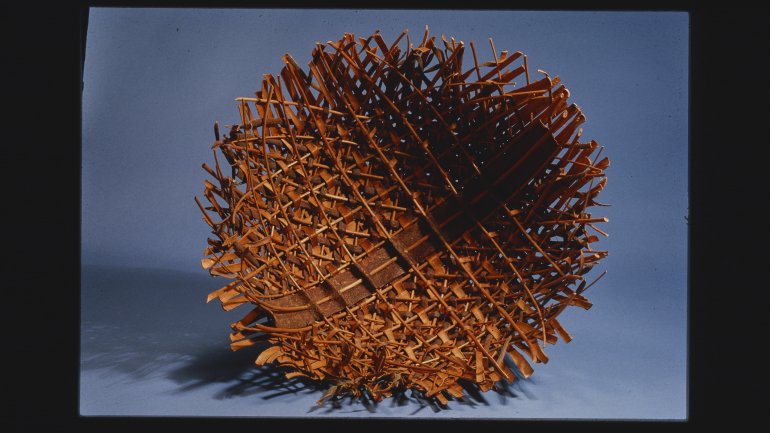Remembering: Dorothy Gill Barnes
↑ Dorothy Gill Barnes, Windfall Ridge III, 1984, plaited bark and willow.
Photo: American Craft Council Library & Archives
American Craft Council Fellow Dorothy Gill Barnes, fiber artist and wood sculptor, died on November 23 at the age of 93. She was recognized internationally as an innovative basketry artist whose work celebrated the natural features of the materials she harvested from around her Ohio home.

↑ Dorothy Gill Barnes pictured in 1999.
Photo: ACC Library & Archives

↑ Dorothy Gill Barnes, Lichen Loom Basket, 1982, 4.5 x 5 x 4 in.
Photo: ACC Library & Archives
Dorothy Gill Barnes was born in Strawberry Point, Iowa, in 1927. She earned her BA and MA degrees in art education from the University of Iowa and taught for a time at Parsons College in Fairfield, Iowa. She married her husband, composer Marshall Barnes, in 1952, and in 1957, they made their way to Columbus, Ohio, where Marshall found a position on the faculty at Ohio State University. Dorothy maintained her home and art practice in the Columbus area for the rest of her life, teaching at Capital University in Columbus from 1966 to 1990, as well as through numerous workshops and residencies nationally and internationally.
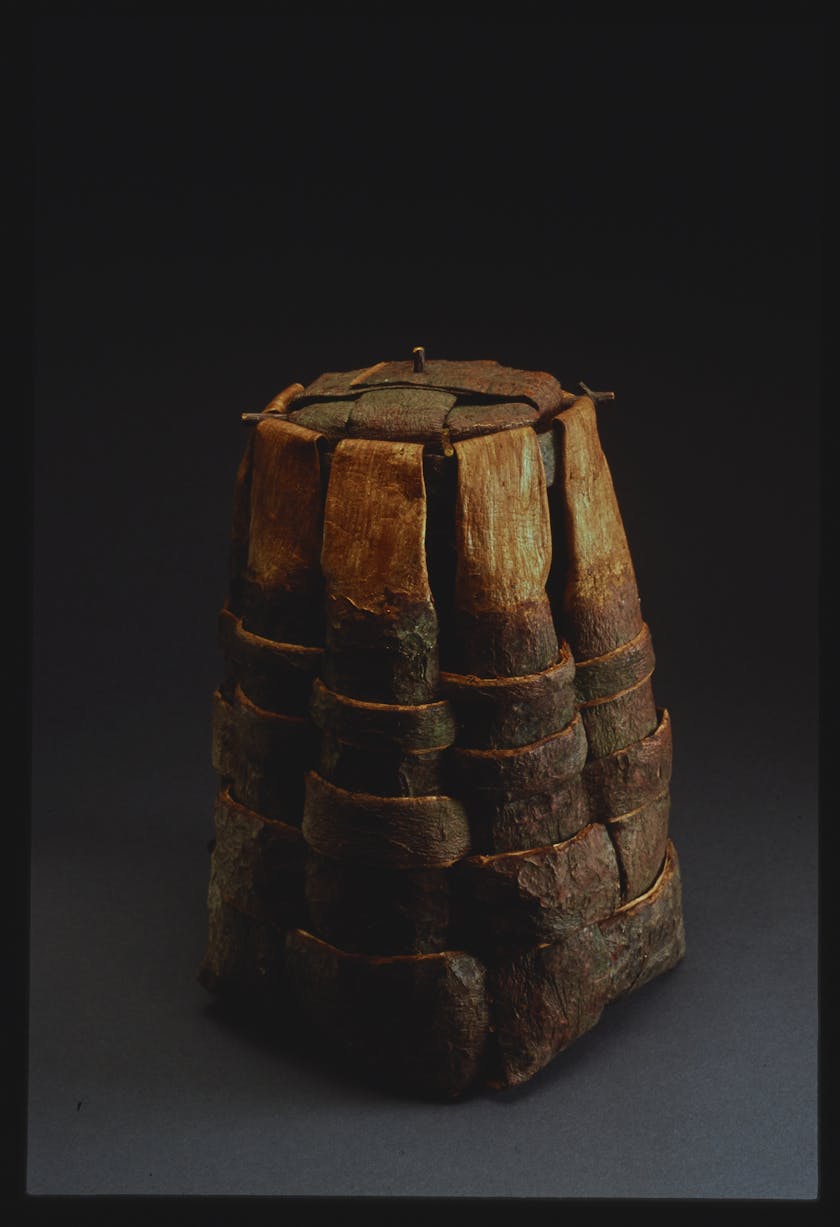
↑ Dorothy Gill Barnes, Pine Bark with Lid, 1989.
Photo: Doug Martin
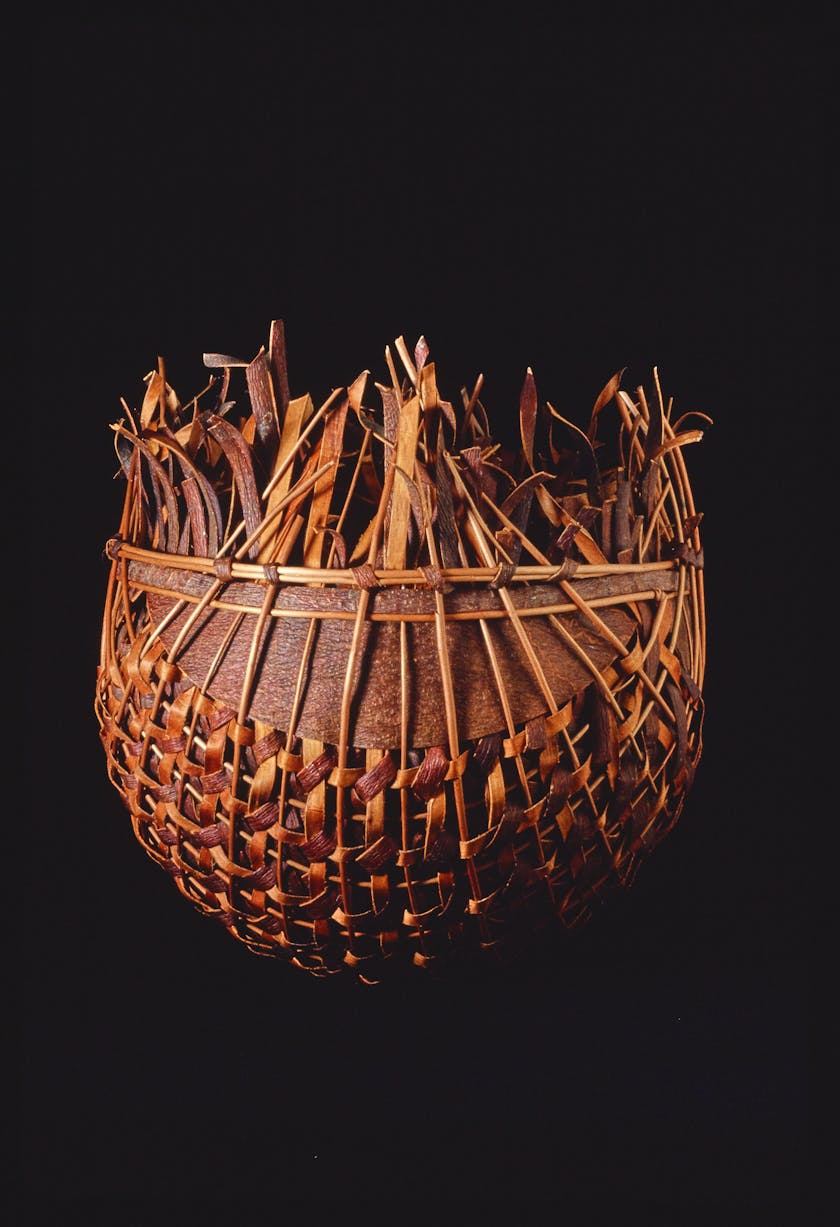
↑ Dorothy Gill Barnes, Pine Bark with Willow, 1985, plaited, 12 x 12 x 12 in.
Photo: ACC Library & Archives
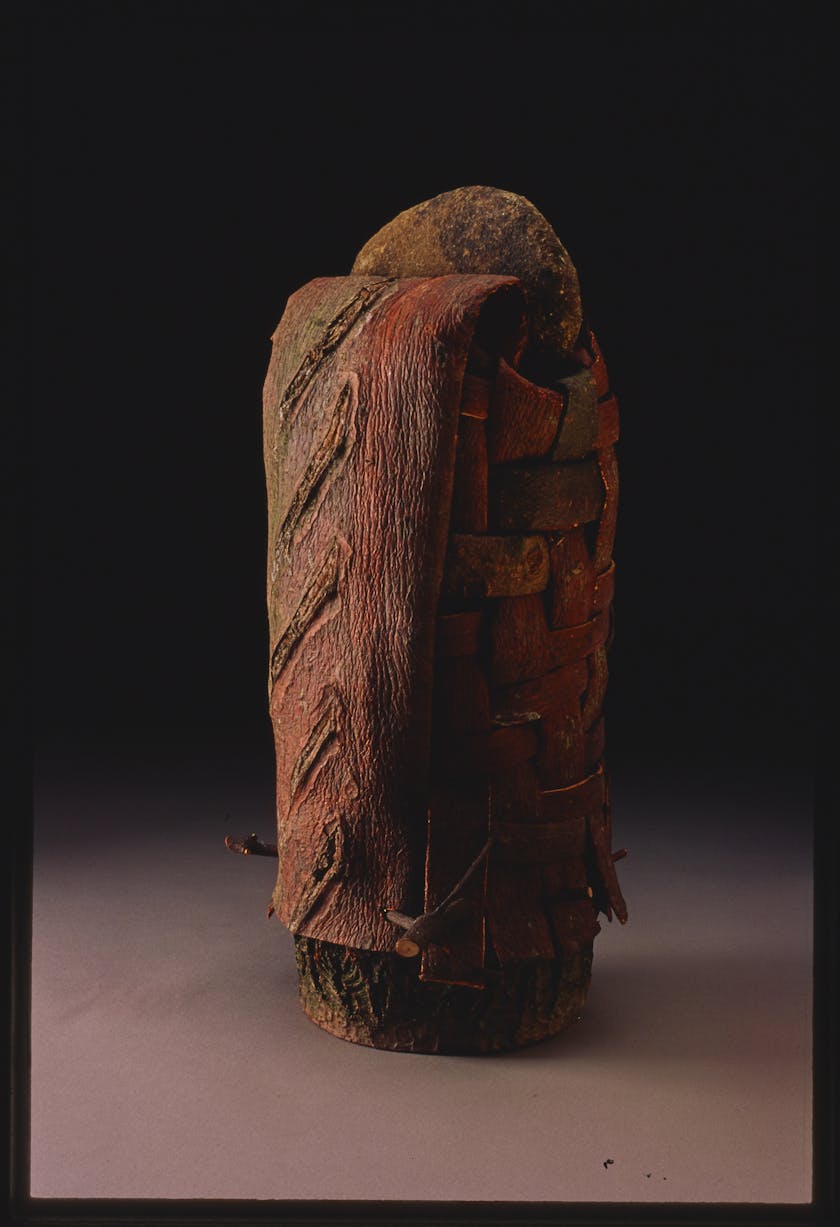
↑ Dorothy Gill Barnes, Bark Drawing with Stone Lid, 1991, 14 x 8 x 6 in.
Photo: ACC Library & Archives
Dorothy’s studies and early career focused on painting, ceramics, and jewelry making, and it wasn’t until she was in her 40s that she began to explore the fiber field. She was inspired by the work of Dwight Stump, a maker of white oak baskets, and found the convergence of woodworking, sewing techniques, and the harvesting of materials from nature much to her liking. She chose to work solely with materials she gathered herself, being mindful that she “respectfully harvested” branch, bark, and stem. Conscious of environmental and ecological concerns, she would often seek out trees marked for removal within her community. In addition to gathering materials based on their special features, Dorothy also worked with nature to create what she termed “dendroglyphs,” or raised “drawings” in bark. By selecting trees and cutting patterns into the bark with a knife, she would return a year or two later after scar tissue developed into a raised pattern in the bark.
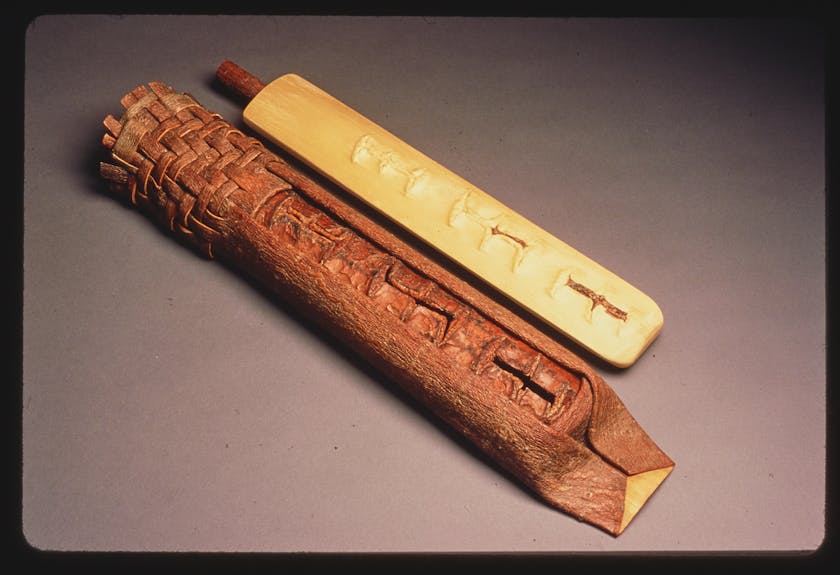
↑ Dorothy Gill Barnes, Three Kings Dendroglyph.
Photo: ACC Library & Archives
The American Craft Museum included Dorothy’s work in two exhibitions in 1987, “Craft Today: Poetry of the Physical” and “Interlacing: The Elemental Fabric.” Her work can be found in numerous permanent collections including the Museum of Arts and Design in New York, the Renwick Gallery of the Smithsonian American Art Museum in Washington, D.C., the Racine Art Museum, and the Schumacher Gallery in Columbus, Ohio. She is the recipient of many awards including three Ohio Arts Council Fellowship Grants, a Lifetime Achievement Award from the National Museum of Women in the Arts, and the Ohio Governor’s Award for the Arts. She was inducted into the ACC College of Fellows in 1999.
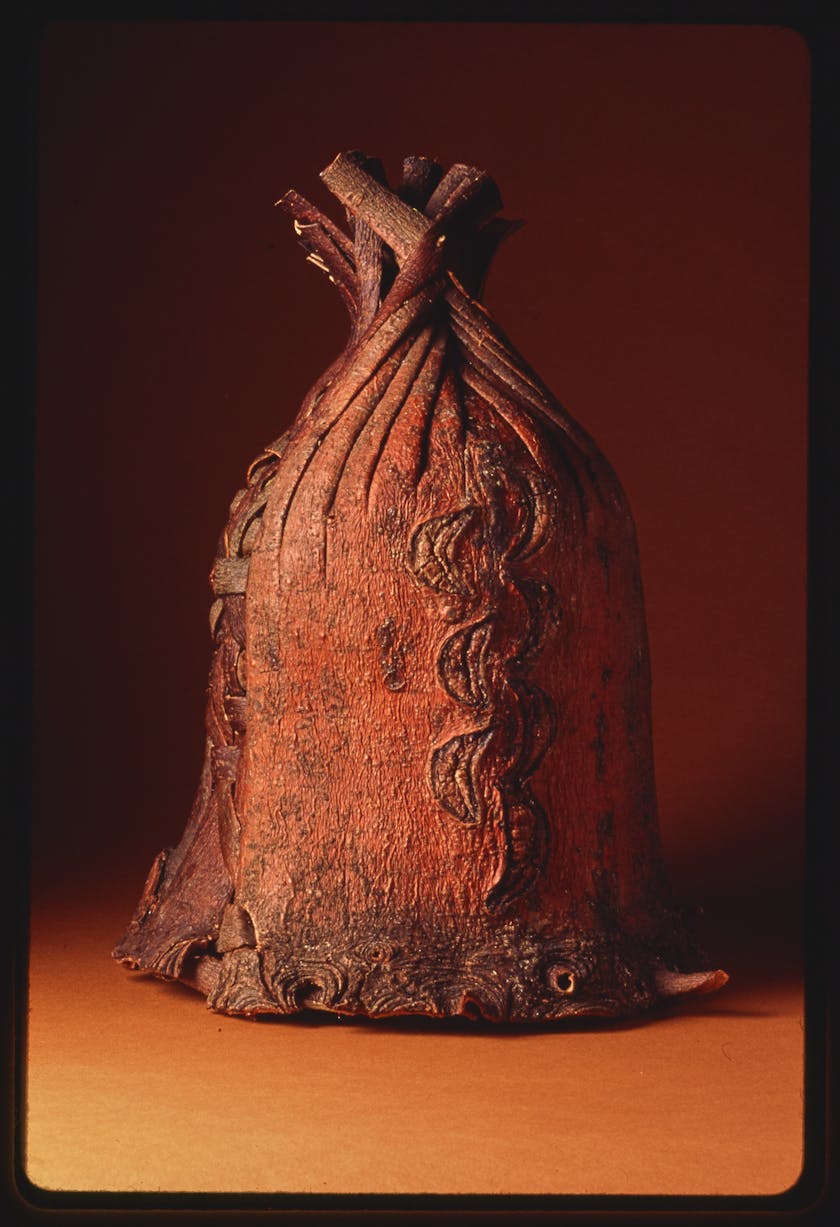
↑ Dorothy Gill Barnes, 7 Moons, 1996, 16 x 11 in.
Photo: ACC Library & Archives
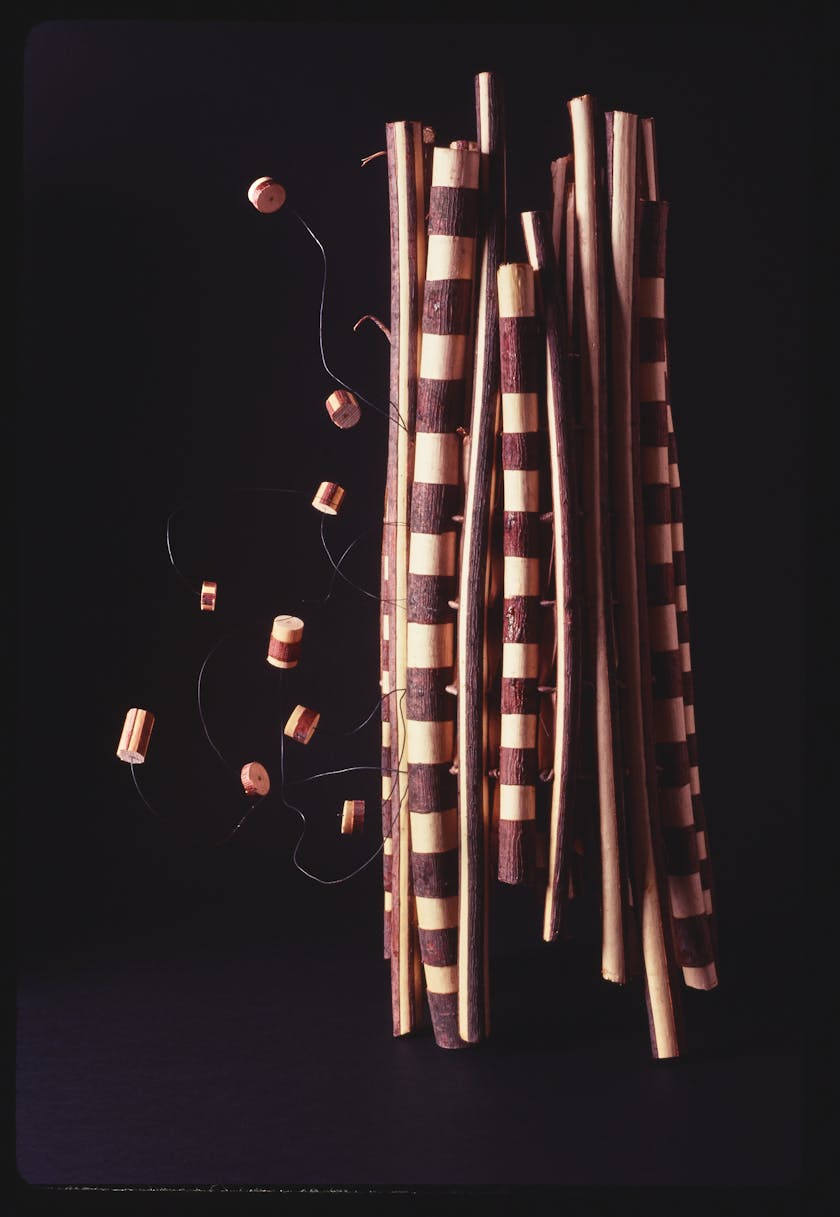
↑ Dorothy Gill Barnes, Striped Pine Branches, 23 x 14 x 18 in.
Photo: Doug Martin
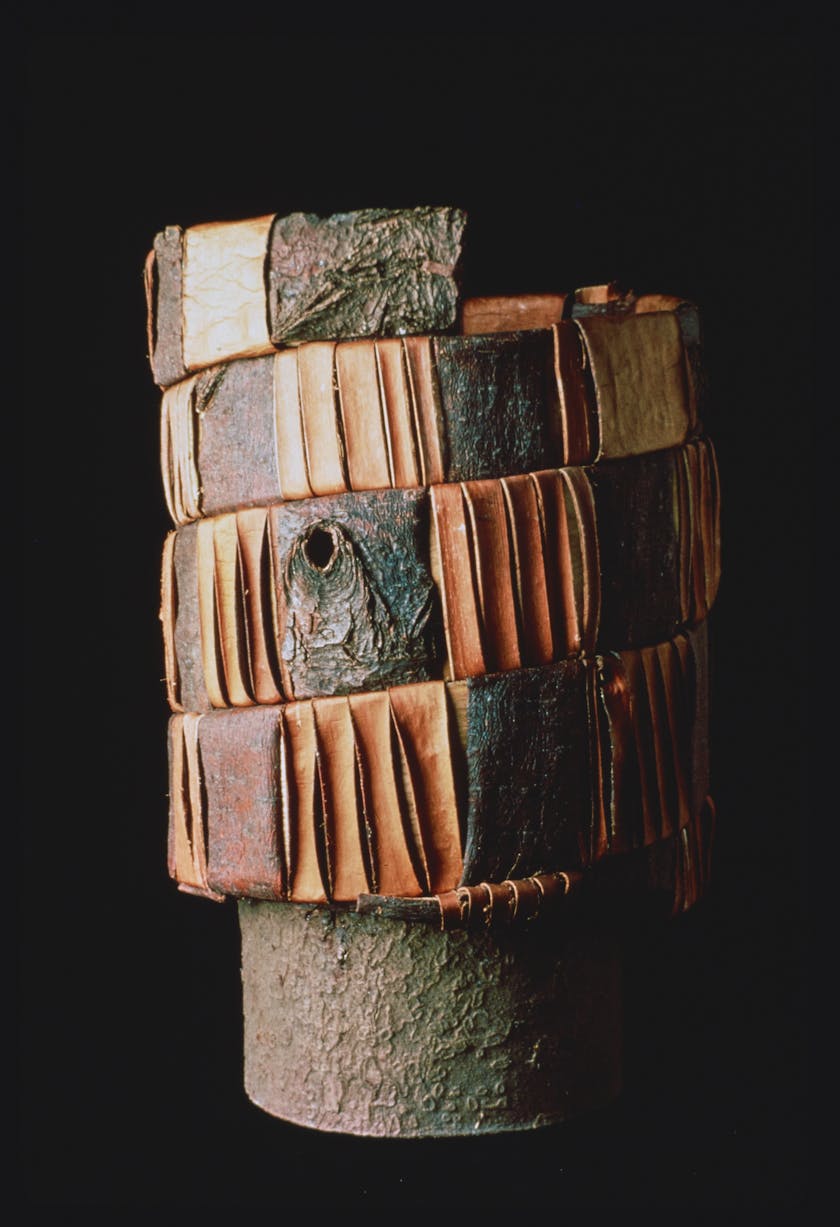
↑ Dorothy Gill Barnes, Spiral Poplar and Pine, 18 x 12 x 12 in.
Photo: ACC Library & Archives
An oral history interview with Dorothy Gill Barnes can be found at the Smithsonian Archives of American Art.


